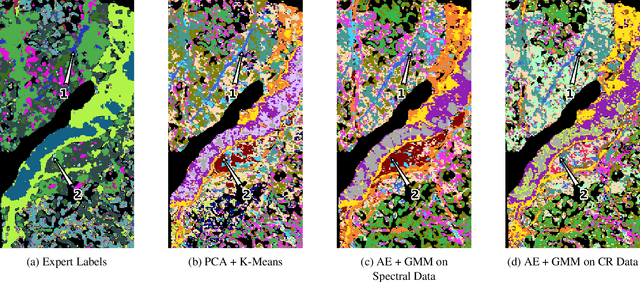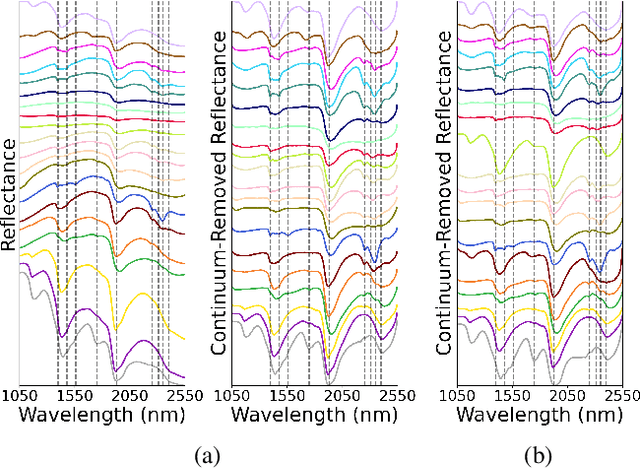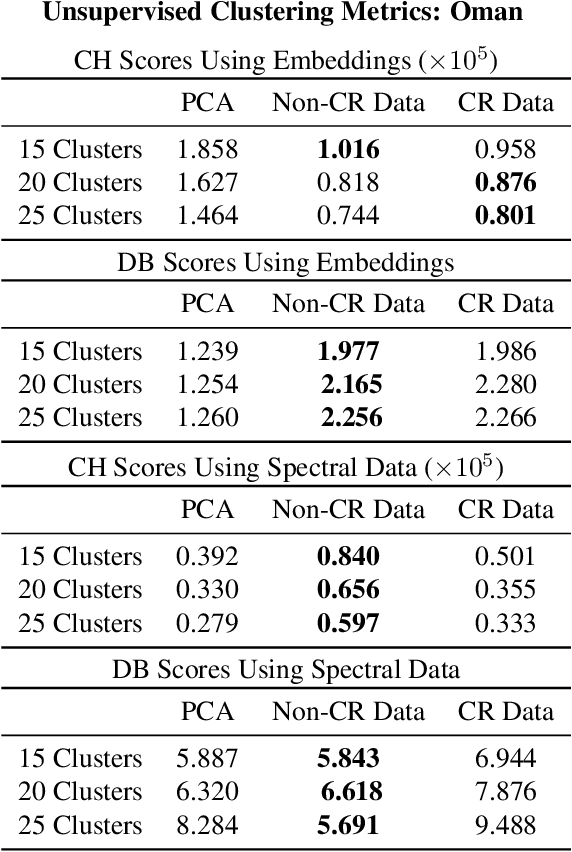Bethany L. Ehlmann
Generalized Unsupervised Clustering of Hyperspectral Images of Geological Targets in the Near Infrared
Jun 24, 2021



Abstract:The application of infrared hyperspectral imagery to geological problems is becoming more popular as data become more accessible and cost-effective. Clustering and classifying spectrally similar materials is often a first step in applications ranging from economic mineral exploration on Earth to planetary exploration on Mars. Semi-manual classification guided by expertly developed spectral parameters can be time consuming and biased, while supervised methods require abundant labeled data and can be difficult to generalize. Here we develop a fully unsupervised workflow for feature extraction and clustering informed by both expert spectral geologist input and quantitative metrics. Our pipeline uses a lightweight autoencoder followed by Gaussian mixture modeling to map the spectral diversity within any image. We validate the performance of our pipeline at submillimeter-scale with expert-labelled data from the Oman ophiolite drill core and evaluate performance at meters-scale with partially classified orbital data of Jezero Crater on Mars (the landing site for the Perseverance rover). We additionally examine the effects of various preprocessing techniques used in traditional analysis of hyperspectral imagery. This pipeline provides a fast and accurate clustering map of similar geological materials and consistently identifies and separates major mineral classes in both laboratory imagery and remote sensing imagery. We refer to our pipeline as "Generalized Pipeline for Spectroscopic Unsupervised clustering of Minerals (GyPSUM)."
Machine-Learning-Driven New Geologic Discoveries at Mars Rover Landing Sites: Jezero and NE Syrtis
Sep 05, 2019



Abstract:A hierarchical Bayesian classifier is trained at pixel scale with spectral data from the CRISM (Compact Reconnaissance Imaging Spectrometer for Mars) imagery. Its utility in detecting rare phases is demonstrated with new geologic discoveries near the Mars-2020 rover landing site. Akaganeite is found in sediments on the Jezero crater floor and in fluvial deposits at NE Syrtis. Jarosite and silica are found on the Jezero crater floor while chlorite-smectite and Al phyllosilicates are found in the Jezero crater walls. These detections point to a multi-stage, multi-chemistry history of water in Jezero crater and the surrounding region and provide new information for guiding the Mars-2020 rover's landed exploration. In particular, the akaganeite, silica, and jarosite in the floor deposits suggest either a later episode of salty, Fe-rich waters that post-date Jezero delta or groundwater alteration of portions of the Jezero sedimentary sequence.
 Add to Chrome
Add to Chrome Add to Firefox
Add to Firefox Add to Edge
Add to Edge